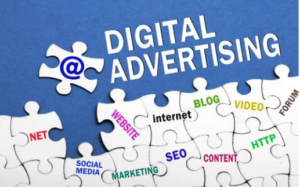
Embracing the Future of Digital Advertising – 10 Tips to Do It Right
Digital advertising is the cornerstone of driving brand promotion and sales in the age of technology. The landscape has evolved remarkably through the years, and advertisers face more challenges than ever with an ever-changing ecosystem. From dealing with customer privacy to ad fraud to adapting to ad blockers, digital advertising has its fair share of obstacles.
However, by staying current with the newest trends in technology, ad formats, and platforms, advertisers can make the most of the ongoing evolution. Here are X recommendations to help you harness the future of digital advertising.
1. Embrace New Formats and Channels

Gone are the days of using only static banners and pop-up ads. To grab the audience’s attention, advertisers should use new high-impact ad formats that break through the clutter. Here are some examples:
- Native advertising – Mimicking a platform’s aesthetic and editorial format, native ads provide a seamless, less intrusive, and more effective method of reaching audiences.
- Video advertising – Video ads are among the most engaging and suitable formats for storytelling, while the increase in video ad consumption suggests this format is here to stay.
- Augmented reality (AR) and virtual reality (VR) – Experimenting with AR and VR advertising allows brands to immerse the audience within their narrative on a sensory level, increasing ad recall and purchase intent.
- Web3 ads – As the world becomes more familiar with the concepts of blockchain technology and decentralized applications, incorporating Web3 ad formats and channels can open up new avenues for engagement and targeting.
2. Utilize Programmatic Advertising
Programmatic advertising automates the process of buying and selling ad inventory, providing advertisers access to a vast range of platforms and publishers.
This technology uses AI to analyze user data and targeting criteria, ensuring relevant ads are served to the proper audience. This results in more cost-effective and efficient ad campaigns.
3. Prioritize Transparency and Brand Safety

The internet is rife with ad fraud, so prioritizing brand safety and working with trustworthy partners is essential to protect a brand’s reputation.
Review potential partners’ policies, technologies, and procedures for detecting and preventing fraud and their brand safety measures. Insist on transparency in fees and data concerning audience targeting, engagement, and viewability.
4. Leverage Data-Driven Targeting
Use AI-driven analytics to analyze customer data and segment audiences based on their preferences, demographics, and online behavior. Advertisers can enhance engagement and return on investment (ROI) by targeting users with relevant, personalized content.
Implement customer data platforms (CDPs), which gather data from multiple sources to build a full picture of individual customers, enabling better targeting and tailoring of campaigns.
5. Implement Omnichannel Advertising
An omnichannel approach offers an integrated and seamless customer experience across multiple channels and devices. This ensures a cohesive message and presence for your brand regardless of where the customer interacts with it, increasing awareness and driving conversions.
Develop cohesive brand messaging and creative designs for your ads to maintain consistency across all channels.
6. Optimize for Mobile and Voice Search

With mobile devices accounting for over 50% of online search traffic, optimizing advertising for mobile is crucial. Ensure your ads are mobile-responsive and fast-loading, and track mobile-specific metrics for your campaigns.
Additionally, with the rise of voice platforms like Amazon’s Alexa and Google Home, optimizing content for voice search will be increasingly important. Use long-tail keywords and conversational phrases that reflect the way users naturally speak and ask questions.
7. Embrace Content Marketing and Storytelling

Quality content and strong storytelling are essential components of a successful digital advertising strategy. Focus on creating engaging, informative, and entertaining content that resonates with your audience— whether in the form of long-form articles, videos, podcasts, or interactive content.
Use storytelling techniques to connect with your audience on an emotional level, fostering brand loyalty and engagement.
8. Prioritize User Experience and Ad Quality
Ensure your audience has a positive experience interacting with your ads by avoiding invasive, disruptive, and deceptive formats. Additionally, create ads with high-quality visuals and clear, concise messaging.
Avoid auto-playing videos and excessive ad placements, which may harm the user experience (UX) and damage your brand reputation. Track metrics such as viewability, ad interaction, and bounce rate to assess the performance of your ads and improve the UX.
9. Respond to Privacy Concerns and Regulations
The General Data Protection Regulation (GDPR) in Europe and similar legislation in other regions have put data protection and privacy in the spotlight. Advertisers should ensure compliance with these laws and prioritize clear communication of data usage and consent policies to avoid potential legal implications and maintain customers’ trust.
10. Stay Current and Agile
Lastly, the digital advertising landscape constantly evolves, and what worked yesterday may not work tomorrow. Continually monitor trends and changes in technology, platforms, and strategies to adapt your approach accordingly.
Emphasize innovation and embrace a test-and-learn mentality to stay ahead of the curve and keep your campaigns fresh and relevant.
Conclusion
The rapidly changing world of digital advertising presents both challenges and opportunities. By embracing new formats, leveraging technology, and prioritizing user experience, advertisers can create a future-proof digital advertising strategy that drives brand growth and success.
Stay agile, informed, and ready to embrace the next wave of innovation to harness the true potential of digital advertising.
Author Profile

- Blogger by Passion | Contributor to many Business and Marketing Blogs in the United Kingdom | Fascinated with SEO and digital marketing and latest tech innovations |
Latest entries
 Social MediaApril 23, 2024What Are Some of the Best Practices and Pitfalls of Engaging With Your Competitors on Social Media?
Social MediaApril 23, 2024What Are Some of the Best Practices and Pitfalls of Engaging With Your Competitors on Social Media? marketingApril 11, 2024How Video Game Streaming Has Revolutionised Online Marketing?
marketingApril 11, 2024How Video Game Streaming Has Revolutionised Online Marketing? TechnologyMarch 29, 2024Managed IT Services London: Revolutionizing Tech Support!
TechnologyMarch 29, 2024Managed IT Services London: Revolutionizing Tech Support! TechnologyMarch 28, 2024The Role of AI in Revolutionizing IT and Marketing Strategies
TechnologyMarch 28, 2024The Role of AI in Revolutionizing IT and Marketing Strategies

